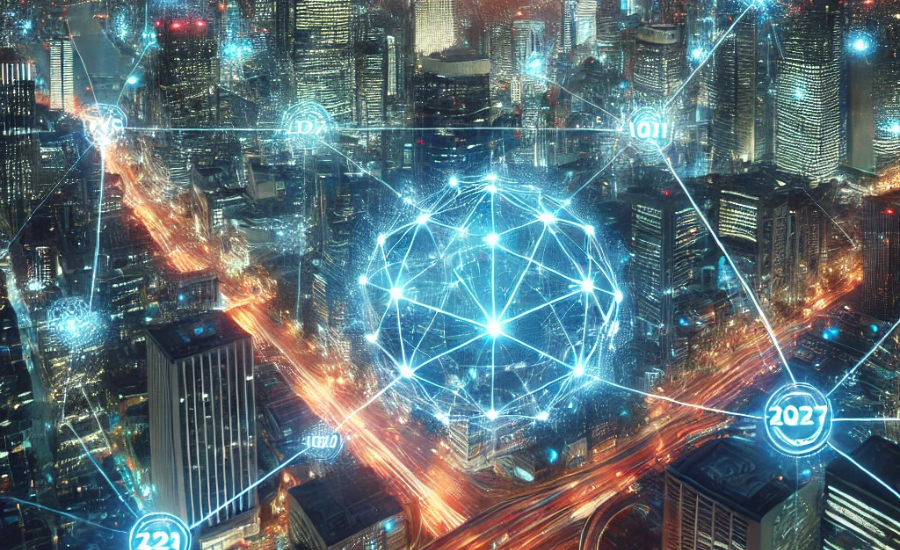IPv6 technology has become essential in supporting the expanding internet, ensuring its long-term growth and functionality. A notable example of an IPv6 address is 2001:470:7977:100::11, which serves as a unique identifier within a broader IPv6 network. This address plays a crucial role in various aspects of digital infrastructure, influencing how networks are managed, secured, and connected in today’s increasingly complex online environment. Its presence underscores the importance of IPv6 in maintaining the efficiency and scalability of modern internet systems.
Exploring IPv6 and the Significance of 2001:470:7977:100::11
As the digital world expands, IPv6, the latest version of the Internet Protocol, has become crucial in overcoming the limitations of IPv4, most notably the shortage of available IP addresses. IPv4’s 32-bit address system created roughly 4.3 billion addresses, which quickly proved insufficient for the increasing number of devices connecting to the internet, from computers and smartphones to smart home systems and IoT devices. IPv6 addresses this issue by implementing a 128-bit address space, which supports approximately 340 undecillion (a figure with 38 zeros) unique addresses, ensuring that the internet can accommodate future growth without running out of addresses.
IPv6 addresses like 2001:470:7977:100::11 are not random; they follow a structured format that provides information about the address’s source, purpose, and usage. In the case of 2001:470:7977:100::11, the address represents a specific subnet, often designated for a particular region, organization, or purpose within the global internet infrastructure.
This address, for example, includes “2001:470” as part of its global routing prefix, indicating a specific allocation of addresses that belong to a particular network provider or registry. The “7977:100” portion refers to a subnet identifier, which specifies a particular network segment or region within that provider’s infrastructure. The “::11” represents the interface identifier, which uniquely distinguishes a device or interface within that subnet.
Furthermore, an address such as 2001:470:7977:100::11 holds significant implications for businesses, governments, and internet service providers, who are constantly managing vast networks of devices. The ability to define precise subnets and assign unique addresses helps streamline network operations, improve traffic flow, and bolster the security of communications across the internet. As the internet continues to grow with more devices and users, the role of IPv6, and specific addresses like 2001:470:7977:100::11, will become even more vital to ensuring the efficient, secure, and scalable management of our global digital infrastructure.
The Importance of 2001:470:7977:100::11 in Network Configuration and Security

IPv6 addresses like 2001:470:7977:100::11 serve a fundamental purpose in the efficient configuration and operation of modern networks. As the digital landscape continues to expand, these addresses are key to routing traffic seamlessly across the vast, interconnected web. Network administrators rely on IPv6 addresses to define and allocate subnets to specific domains within their infrastructures, which enhances the overall organization, control, and security of data flow within large or complex networks.
One of the major advantages of IPv6, and addresses like 2001:470:7977:100::11, is the ability to support a virtually limitless number of unique addresses, a critical improvement over the limited address space of IPv4. This extended capacity allows for better resource allocation, enabling network administrators to assign specific subnets to different departments, regions, or devices with greater flexibility. This not only simplifies network management but also improves the performance and reliability of internet-based systems by optimizing data traffic and reducing bottlenecks.
Security is another critical aspect where IPv6, and by extension, addresses such as 2001:470:7977:100::11, bring significant advancements. Unlike its predecessor, IPv6 includes built-in security protocols, with IPsec (Internet Protocol Security) being a mandatory feature for all IPv6-enabled devices. IPsec offers strong encryption and authentication mechanisms, ensuring that communication between devices is both secure and private. This integration of security measures at the core of IPv6 makes networks using these addresses inherently safer against threats such as data breaches, unauthorized access, and cyberattacks.
For businesses, governments, and other organizations managing large networks, the security provided by IPv6 is critical for protecting sensitive information and maintaining the integrity of their systems. Addressing structures like 2001:470:7977:100::11 enable more granular control over network configurations, allowing administrators to design systems that meet specific security and operational needs. The ability to create distinct subnets also helps in compartmentalizing network segments, which can act as an additional layer of defense by limiting the impact of potential vulnerabilities or attacks to a specific area of the network.
IPv6 addresses like 2001:470:7977:100::11 not only enhance the efficiency and scalability of networks but also play a crucial role in improving their security and management. With their advanced routing capabilities and integrated security features, these addresses are essential tools for navigating the future of the internet, ensuring that networks remain robust, secure, and capable of supporting the growing demands of the digital world.
Advancing Global Connectivity: The Transformative Role of IPv6
The ongoing transition from IPv4 to IPv6 is one of the most significant developments in the evolution of internet protocols. IPv4, with its capacity of approximately 4.3 billion unique addresses, was initially sufficient for the early stages of the internet. However, as the number of devices connecting to the internet skyrocketed—ranging from smartphones to IoT devices—IPv4’s limitations became evident. The development of IPv6 was not only to address this shortage but also to ensure that the internet remains scalable and efficient for the future. An address like 2001:470:7977:100::11 illustrates the power and flexibility of IPv6, designed to meet the needs of modern connectivity by offering an almost unlimited pool of addresses.
The Evolution of Internet Protocols: From IPv4 to IPv6
IPv6 is more than just a solution to address exhaustion; it is a strategic advancement that significantly enhances the architecture and performance of the internet. The explosion of digital devices, from everyday gadgets to sophisticated cloud services, made the transition to IPv6 essential. IPv6’s 128-bit address system allows for approximately 340 undecillion unique addresses, ensuring that the internet can continue to grow without concerns of running out of IP addresses.
The address 2001:470:7977:100::11 represents the forward-looking design of IPv6. It not only provides more addresses but also accommodates improved network scalability, allowing for easier expansion of networks. This transition empowers industries, governments, and organizations to future-proof their digital infrastructures while maintaining smooth and reliable connectivity as new technologies continue to emerge.
Enhanced Network Architectures with IPv6 Address 2001:470:7977:100::11
One of the major advantages of IPv6 is the structured way it supports network architecture. IPv6 addresses like 2001:470:7977:100::11 are designed to simplify the routing process, leading to better-organized and more hierarchical network structures. This method helps to streamline traffic management by optimizing the size of routing tables stored on routers, ensuring faster data flow and reduced network congestion. For businesses and service providers that rely on efficient data transmission, this can translate into improved performance and service reliability.
By using IPv6 addresses such as 2001:470:7977:100::11, network administrators can implement more robust and structured routing protocols. This enables the segmentation of networks based on regions, departments, or functions, improving both scalability and security. In essence, this hierarchical structure offers a more effective way to route data, particularly in larger networks where performance and uptime are critical.
Strategic Cybersecurity Benefits of IPv6 and 2001:470:7977:100::11

Cybersecurity is another area where IPv6 excels compared to its predecessor. IPv6 was built with security in mind, integrating encryption and authentication directly into the protocol’s design. Addresses like 2001:470:7977:100::11 benefit from the inherent security features of IPv6, which include IPsec (Internet Protocol Security) as a mandatory component for all IPv6 devices. This ensures that data being transmitted between endpoints is encrypted and authenticated, significantly reducing the risks of interception or cyberattacks.
For organizations deploying IPv6, using addresses like 2001:470:7977:100::11 strengthens their overall security frameworks. This is particularly important as cyber threats become more sophisticated and widespread. Unlike IPv4, where security features often had to be layered on top of existing systems, IPv6 makes security a foundational aspect. This proactive approach to securing networks helps prevent data breaches, unauthorized access, and other forms of cybercrime, offering a more resilient defense against growing online threats.
IPv6 and addresses like 2001:470:7977:100::11 represent a major leap forward in global connectivity. By enhancing network architecture, improving routing efficiency, and embedding security at the core of its design, IPv6 is positioned to meet the challenges of the digital future while ensuring that the internet remains a safe, scalable, and high-performance platform for all users.
The Future of Connectivity with IPv6 and 2001:470:7977:100::11
IPv6, represented by addresses like 2001:470:7977:100::11, is essential for supporting the rapid expansion of connected devices and emerging technologies. As smart cities, the Internet of Things (IoT), and AI-driven applications evolve, IPv6 offers the scalable and efficient infrastructure needed to manage billions of devices. Its larger address space and built-in security features ensure faster, more reliable, and secure connections, reducing the complexity of networks and enhancing real-time data transmission.
Furthermore, the adoption of IPv6 is critical for the seamless operation of technologies like autonomous vehicles and smart systems that rely on low-latency, high-speed connectivity. By eliminating the limitations of IPv4 and providing future-proof scalability, IPv6 ensures that global internet infrastructure remains capable of meeting the demands of the next generation of digital innovation.
Facts
- IPv6 Technology:
IPv6 is the latest version of the Internet Protocol, developed to overcome the limitations of IPv4, most notably the shortage of IP addresses.
- Address Size:
IPv6 uses a 128-bit address system, allowing for approximately 340 undecillion unique addresses, compared to IPv4’s 32-bit system, which only supports about 4.3 billion addresses.
- IPv6 Address Example:
The IPv6 address “2001:470:7977:100::11” is a unique identifier within a larger IPv6 network, structured to provide specific information about the address’s source, subnet, and device.
- Address Components:
An IPv6 address is typically divided into three parts: the global routing prefix, subnet identifier, and interface identifier. In the case of “2001:470:7977:100::11,” “2001:470” refers to the global routing prefix, “7977:100” to the subnet, and “::11” to the interface identifier.
- Security Features:
IPv6 has integrated security protocols like IPsec, which provides mandatory encryption and authentication for secure data transmission.
- Network Scalability:
IPv6 simplifies routing, improves traffic flow, and supports the scalable growth of networks, which is essential for emerging technologies like IoT, autonomous vehicles, and smart cities.
FAQs
Q: What is IPv6, and how is it different from IPv4?
A: IPv6 is the latest version of the Internet Protocol, designed to address the shortage of IP addresses in IPv4. While IPv4 uses a 32-bit address space, allowing for about 4.3 billion addresses, IPv6 uses a 128-bit system, providing approximately 340 undecillion unique addresses.
Q: What does the IPv6 address “2001:470:7977:100::11” represent?
A: “2001:470:7977:100::11” is a unique IPv6 address, with “2001:470” indicating the global routing prefix, “7977:100” specifying the subnet, and “::11” representing the device interface. It is structured to support network management, routing, and security.
Q: Why is IPv6 important for network security?
A: IPv6 integrates IPsec as a mandatory security feature, providing encryption and authentication for secure data transmission. This built-in security reduces the risk of cyberattacks, making networks more secure compared to IPv4, where security had to be added separately.
Q: How does IPv6 improve network scalability?
A: With its vast address space and structured addressing system, IPv6 simplifies network management and routing. This allows network administrators to allocate subnets and addresses efficiently, ensuring seamless data flow and reducing congestion in large networks.
Related: 32-32-65-4-4-44-4-21
Conclusion
IPv6, and addresses like “2001:470:7977:100::11,” are essential for the future of internet connectivity. By providing a virtually limitless pool of addresses, IPv6 ensures that the internet can accommodate the growing number of devices and users worldwide. Its built-in security features, such as IPsec, significantly enhance network security, while its efficient routing capabilities improve performance and scalability. As the world becomes more connected with smart technologies and IoT, IPv6 will play a crucial role in ensuring seamless, secure, and future-ready internet infrastructure.
Keep connected for the latest updates and alerts: News Link Times
